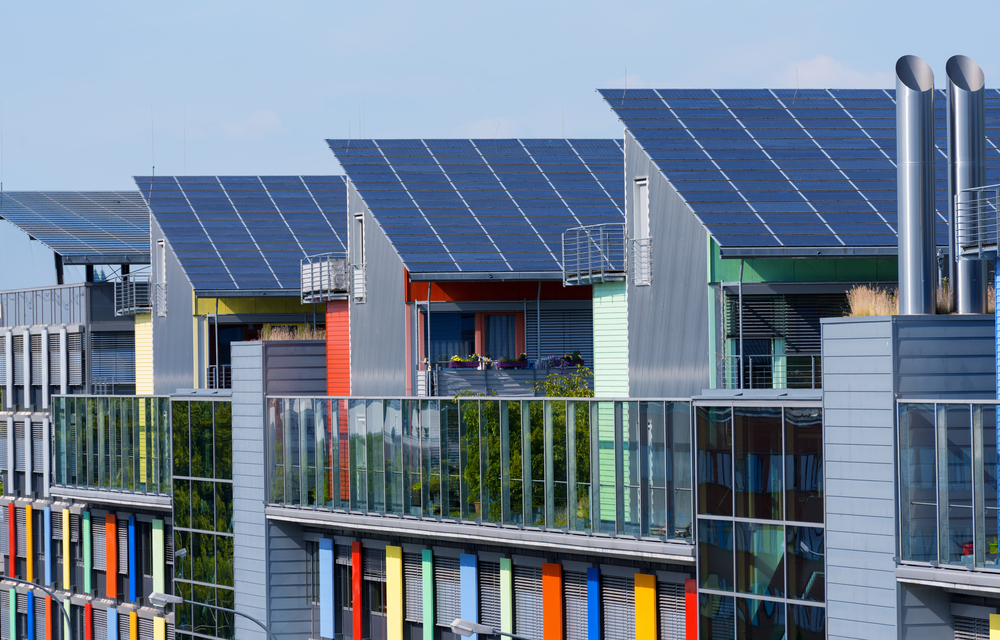Featured
The Sun – our star, source of life, and ironically, a key part of one of the cleanest energy sources for modern homes. Solar residence energy solutions have shifted from a high-tech dream to a mainstream reality. This abundant power can shrink your carbon footprint and cut your electricity costs.
Multinational agreements and grassroots movements are driving sustainability. Now is the time to see how solar power can turn our homes into energy producers.
Ready to demystify the process and prep your homestead for a solar-powered future? Stay tuned as we uncover the rays of hope that solar energy brings to your doorstep.
- Shedding Light on Solar Basics
- Why Residential?
- Economic Considerations
- Environmental Implications
- Under the Sun of Monetary Incentives
- The Sweet Spot of Tax Breaks
- Local Leverages
- The Power of Net Metering
- The Solar Installation Symphony
- The Initial Consultation Choreography
- Financing Your Wattage
- Panel Placement Performance
- Illuminating the Eco-Efficiency Benefits
- Energy Independence Day
- Bulk Buying Watts
- Beyond Batteries
- The Bright Idea Breakeven
- Crunching the Solar Numbers
- The Durability Dynamics
- Selling Solar with Resale Value
- The Future of Solar Residence Energy Solutions
Shedding Light on Solar Basics
It’s not complicated physics. When sunlight hits certain materials, it excites electrons, generating an electrical current. We’ve harnessed this principle to create photovoltaic (PV) cells, commonly known as solar panels.
When installed in your home, these panels can capture sunlight and turn it into electricity. It’s ready to power your household gadgets, gizmos, and appliances.

Why Residential?
In yesteryears, solar home energy solutions were often associated with gargantuan projects and remote areas. Not anymore. Advances in technology and a surge in residential demand have paved the way for solar systems compact enough for a suburban rooftop.
Economic Considerations
Economies of scale and tax incentives have lined up. They make home solar more affordable.
Once, only environmentally conscious pioneers invested in it. Now, it’s a smart economic choice for mainstream homeowners. They want to save on long-term energy costs.
Environmental Implications
Beyond the personal financial perks, renewable energy services stands as a monumental stride in reducing our collective carbon footprint. By switching to solar, homeowners directly contribute to the fight against climate change, as solar power produces little to no greenhouse gas emissions once the panels are up and running.
Under the Sun of Monetary Incentives
The upfront cost of solar panels can indeed pack a substantial punch to the household budget. However, governments and energy companies worldwide are offering attractive incentives to soften the blow and hasten the sunward migration.

The Sweet Spot of Tax Breaks
Tax credits and grants are sectioning off significant percentage points from solar installation costs. The Federal Investment Tax Credit (ITC) has positioned itself as a standout, providing credit for up to 26% of your total solar investment.
Local Leverages
Cities, municipalities, and states are not to be outshone-many offer additional incentives, from rebates to performance-based incentives that pay you for the power you produce.
The Power of Net Metering
With net metering, your panels feed any extra electricity they make into the grid. You often get credits for this from your utility company. This translates to more savings on your energy bills and a potential additional revenue stream.
The Solar Installation Symphony
Installing solar panels is a harmony best played by professionals, such as Fort Collins’ solar energy solutions provider. This phase calls for calculations, assessments, and adherence to a melody of local regulations and building codes. But fret not, as the growing solar marketplace has tuned a crescendo of service providers to assist.

The Initial Consultation Choreography
This choreography begins with a home visit from a solar consultant. They’ll evaluate your energy consumption, roof orientation, pitch, and shading, to determine the size and placement of your solar array.
Financing Your Wattage
Finance options are shining too, with a smorgasbord of loans, leases, and power purchase agreements (PPA) available. Consult with installers on the financing that best matches your situation.
Panel Placement Performance
The position of your panels is pivotal. They should face the southerly sun for maximum efficiency, free from the shadow cast by chimneys and trees, and at an angle matching your latitude for most of the year.
Illuminating the Eco-Efficiency Benefits
The glimmer of green on your wallet is just the beginning. Solar energy propels energy independence and bolsters the resilience of our power systems.

Energy Independence Day
With solar, you’re no longer at the mercy of volatile energy prices. The sun, diligently making its rounds, provides a stable energy source that you control, and the backup batteries that some systems come with ensure a sunny day even when it’s overcast.
Bulk Buying Watts
Going solar can build community bonds too. Pooling resources with neighbors through group purchasing programs can lead to substantial savings and a deeper sense of communal responsibility.
Beyond Batteries
Innovations in home energy storage, like Tesla’s Powerwall, allow homeowners to save their solar-generated power for a rainy day-literally. This conjures the vision of every home as a self-sufficient energy hub, with each raindrop merely a transient inconvenience.
The Bright Idea Breakeven
Your solar system is an investment, and like any investment, it has a breakeven point. This key metric marks the point in time when your energy savings have equaled your initial investment.

Crunching the Solar Numbers
The breakeven figure is influenced by your local climate, energy rates, system cost, and any financial incentives. On average, residential systems tend to break even within 5 to 10 years, after which it’s a surplus of savings and earth-friendly power.
The Durability Dynamics
Durability deserves a spotlight here. Well-maintained solar panels can operate at close to peak performance for over 25 years, so think long-term when calculating your bright financial future.
Selling Solar with Resale Value
The evidence is mounting that solar-equipped homes carry higher property values and can sell faster than their grid-dependent counterparts. It’s a win-win scenario for the environment and your equity.
The Future of Solar Residence Energy Solutions
The sun is our silent sentinel. It offers endless energy. But, we need our technology, our innovation, and our willingness to turn its light into power.
Solar residence energy solutions embody a move toward a cleaner, sustainable future. It’s a lifestyle choice that’s as practical as it is principled.
Transitioning to solar may seem like a huge task, but the path to that sunny day is clear. The industry and the planet are aligning, urging us to step into a solar-powered, eco-friendly future.
Check out our blog for a world of ideas, tips, and insights on various topics. Your next inspiration is just a click away.
Image Credit: depositphotos.com






























